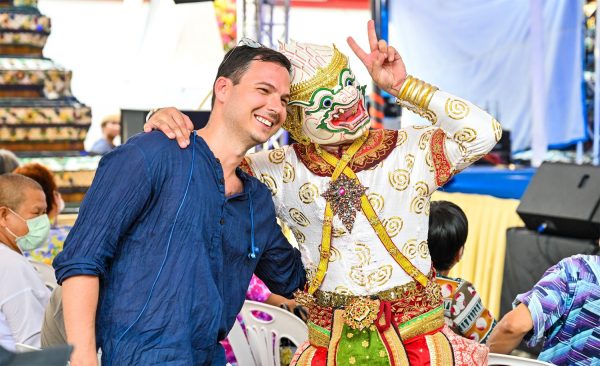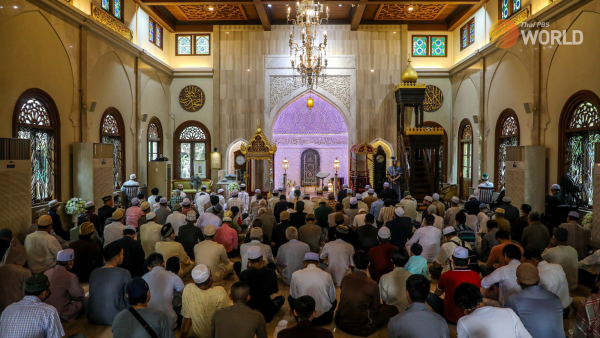Built on teak and rebellion

The demolition of the 131-year-old former Bombay Burmah Trading building in Phrae province made for embarrassing headlines in June, with the Fine Arts Department forced to quick announcing that it would go all out to restore the heritage building from scratch using the original teak as far as possible. But even while waiting for the restoration, Phrae province beckons visitors to walk through its historic quarter and admire the many more heritage buildings still standing.
Nestled along the Yom River in Thailand’s North, Phrae province is probably best known for its no-nonsense talking, moonshine and gunsmithing. With abundant teak forests stretching across the high ranges and deepvalleys, the northern province was Siam’s teak industry mainstay between the late 19th and the early 20th centuries. For 50 years, the rulers and landlords made a fortune from the timber trade. Many teak mansions featuring a blend of Colonial and Lanna architectures were established in town, and most of the buildings still stand today.
There’s no better way to explore the Phrae historic quarter than on foot, where you can take in the sights, sounds, scents and scenery first-hand.

A heritage building of the East Asiatic Company sits on the ruins of city wall in Phrae province, Thailand’s north.
Setting off from Pratu Chai, the ancient East Gate, head North along the leafy path of the ancient city wall to get some idea about the Phrae of yesteryear. The city was an outpost of powerful Chiang Mai back in the 16th century, and you could work out how small it was by standing on top of the ancient city wall. On your right is the city moat, and on your left is town centre where old and new buildings stand together.
A 10-minute walk from the East Gate takes you to the North Gate that separates the old and new districts. Here, in the Wat Hua Khuang neighbourhood, residents have transformedtheir wooden houses into rustic-chic café and restaurants. Ho: Coffee & Craft Café serves freshly-roasted coffee, while Hom 2493 is good for noodles and light meals.
From the North Gate, the path curves south to Kham Saen, the straight road connecting the South Gate with Khom Lue Road. A short walktakes you to Khum Chao Luang. Built in 1892, this majestic Colonial building was the royal residence of the last lord of Phrae. In 1902, when the Shan invaded downtown Phrae in a challenge to Siam’s power, the lord of Phrae was a prime suspect behind the uprising. The rebellion was quickly put down, leaving the lord of Phrae with no choice but to abandon his lavish residence and flee to Luang Phrabang in northern Laos.

Khum Chao Luang, once a royal residence, is now a museum.
The historic building is now a museum.
You can poke around an obscure slice of Phrae history through faded photos of elephants hauling teak logs through forests and of the people who lived there. Ask the museum staff if you can see the basement lockup, where slaves and those who misbehaved were imprisoned underground.
The next stop is Khum Wongburi. This pink building was a wedding present from the lord of Phrae to his stepdaughter. The heritagehouse, a classic example of the gingerbread architecture so popular at the time, is remarkable, and well worth visiting for a momentary taste of noble life among the misty mountains.
Phrae people are rebellious by nature, a characteristic probably brought about by constantly finding themselves in the middle of political confrontations between the powerful Sukhothai, Phayao and Chiang Mai kingdoms. More recently, it found itself a pawn in the game between the Siamese and European empires and even between the Allies and Axis during World War II.
About 350 metres South of Khum Wongburi is the Wichai Racha Residence, another jewel in the crown of Phrae’s historic quarter.

Khum Wongburi makes a bold statement for ‘gingerbread’ architecture and lavish lifestyles.
Built in 1891 by the former treasurer, this house has so many fascinating stories that it merits a book to itself.
Wichai Racha Residence mansion was once a safe house for the Siamese officials who fled the Shan assailants in 1902. Then, during the years when Phrae was a basecamp for the Free Thai movement in Thailand’s North during WWII, thisteak mansion was a hideout for Thai, Americans and Europeans working behind the enemy linesto defy the Imperial Japanese Army.

The Wichai Racha Residence is another treasure in Phrae historical quarter
The mansion was confiscated by the government over a tax issue, and had been left to rot for almost 50 years. But teak is teak. It’s always elegant and endures against all odds. The new owner brought Wichai Racha Residence back to life after painstaking restoration.
On the corner of Phra Non Tai Alley and Khum Doem Road, the two-storey Teak Museum was built on the original estate of the East Asiatic Company from Denmark. The permanent exhibition gives some idea of how the teak trees were cut down, moved from the forest then transported to Bangkok and Europe in the 19th Century. The Colonial building sitting amidthe ruins of the city wall within the compound is well worth climbing for an impressive view from the top.
From here, the route leads back to the Teak Museum. For the perfect end to your stroll,head to Khao Soi Klang Wiang restaurant on Wichai Racha Road. Just a short walk to the east of Teak Museum, the local restaurant is a great place to rest and recuperate with a bowl of sensational noodles and other local dishes.
Phrae’s flat, compact and lively streets make the city an ideal place to explore on foot. Apart from the historical sights, food and culture also lure visitors to Phrae. The hip new restaurantsand boutiques lining Kad Kong Kao pedestrian street on a Saturday evening offer hungry travellers a wonderful night out and a bird’s eye view of local life.

Hip new restaurants and boutiques in the historic quarter make Phrae a more walkable city.






